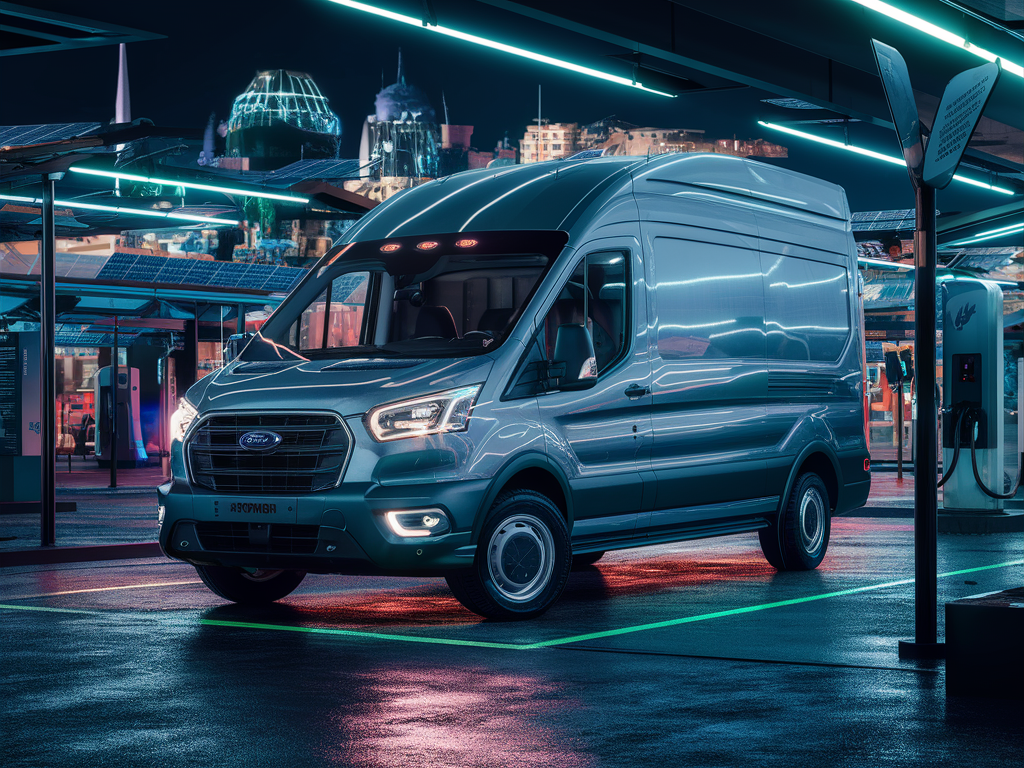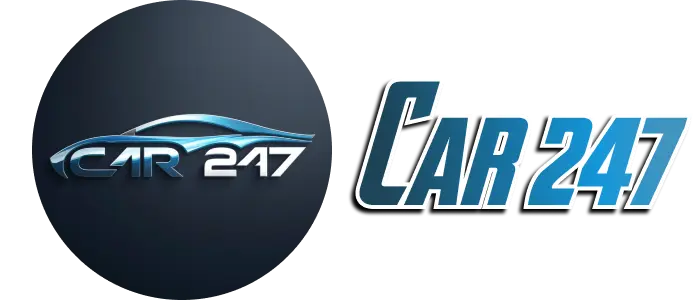The Ford E-Transit, Ford’s all-electric version of its popular Transit commercial van, is poised to revolutionize the world of commercial transportation. As the demand for sustainable and eco-friendly transportation solutions continues to grow, the E-Transit stands out as a game-changer in the commercial vehicle market.
Powered by Ford’s expertise in commercial vehicles and its commitment to electrification, the E-Transit combines the renowned capabilities of the traditional Transit with the efficiency and environmental benefits of electric propulsion. At Car 247, we’ll delve into the Ford E Transit range, key features, and performance, helping you understand why it’s a top contender in the commercial electric vehicle (EV) segment.

The Ford E-Transit: A New Era of Commercial Mobility
The Ford E-Transit is the latest addition to the automaker’s growing lineup of electric vehicles, joining the popular Mustang Mach-E and the all-electric F-150 Lightning. Designed to cater to the needs of businesses and commercial operators, the E-Transit offers a compelling blend of practicality, performance, and sustainability.
Powertrain and Performance
At the heart of the Ford E-Transit is a state-of-the-art electric powertrain that delivers impressive performance. Equipped with a high-capacity lithium-ion battery pack and a single electric motor, the E-Transit produces a maximum output of 198 horsepower and 317 lb-ft of instant torque. This power output ensures the E-Transit can handle the demands of commercial operations, from hauling heavy loads to maneuvering in tight urban environments.
Range and Efficiency
One of the primary concerns for commercial fleet operators when considering an electric vehicle is range. Ford has addressed this with the E-Transit, which boasts an estimated range of up to 126 miles (202 km) on a single charge, based on the Environmental Protection Agency (EPA) test cycle. This range, combined with the vehicle’s rapid charging capabilities, ensures that the E-Transit can meet the daily needs of most commercial users without the need for extensive downtime for recharging.
Charging and Connectivity
The Ford E-Transit supports a variety of charging options to accommodate the diverse needs of commercial operators. Standard on all models is a Level 2 (240V) onboard charger, which can fully recharge the battery in approximately 8 hours. For faster charging, the E-Transit is also compatible with public DC fast-charging stations, allowing for an 80% charge in as little as 34 minutes.
In addition to its impressive charging capabilities, the E-Transit is equipped with a suite of connected features and advanced technologies. This includes the Ford Telematics system, which provides fleet managers with real-time data on vehicle performance, maintenance needs, and driver behavior, enabling more efficient fleet management.
Cargo and Payload Capacity
One of the key strengths of the Ford Transit lineup has always been its versatility and cargo-carrying capabilities, and the E-Transit is no exception. The electric van offers a generous cargo volume of up to 487 cubic feet (13.8 cubic meters) and a maximum payload capacity of 3,800 pounds (1,724 kg), ensuring that businesses can continue to transport and deliver their goods with ease.
Driving Experience and Handling
The Ford E-Transit is designed to provide a smooth and confident driving experience, even in the demanding conditions of commercial operations. The vehicle’s low center of gravity, thanks to the battery pack placement, enhances its handling and stability, while the instant torque delivery of the electric motor ensures responsive acceleration and agile maneuvering.
The Benefits of the Ford E-Transit for Commercial Fleets
The introduction of the Ford E-Transit comes at a critical time, as businesses and commercial operators increasingly prioritize sustainability and cost-efficiency in their transportation solutions. The E-Transit offers a range of benefits that make it an attractive choice for commercial fleets:
Reduced Operational Costs
Electric vehicles, such as the E-Transit, typically have lower fuel and maintenance costs compared to their gasoline-powered counterparts. The E-Transit’s regenerative braking system can help extend the life of brake components, while the lack of an internal combustion engine means fewer moving parts and reduced maintenance requirements.
Environmentally Friendly
By transitioning to the all-electric E-Transit, commercial fleet operators can significantly reduce their carbon footprint and contribute to a more sustainable future. The zero-emission operation of the E-Transit aligns with growing environmental regulations and societal demands for greener transportation solutions.
Improved Driver Experience
The E-Transit’s smooth, quiet, and responsive driving dynamics can enhance the overall driving experience for commercial fleet operators and their drivers. This can lead to improved job satisfaction, reduced driver fatigue, and increased productivity.
Access to Incentives and Rebates
Many governments and municipalities offer various incentives and rebates for the adoption of electric vehicles, including commercial EVs like the Ford E-Transit. Leveraging these incentives can help offset the initial purchase cost and further improve the total cost of ownership for commercial fleet operators.
Conclusion The Ford E Transit Range
The Ford E-Transit represents a transformative shift in the commercial vehicle market, offering a sustainable and practical solution for businesses and fleet operators. With its impressive range, efficient performance, and array of smart features, the E-Transit is poised to become a game-changer in the world of commercial transportation.
As the demand for eco-friendly and cost-effective transportation solutions continues to grow, the Ford E-Transit emerges as a strong contender, delivering the capabilities and reliability that commercial customers have come to expect from the Ford brand. By embracing the E-Transit, businesses can not only reduce their environmental impact but also unlock new levels of efficiency and productivity, making it an essential consideration for the future of commercial mobility.

Bài viết liên quan
Unleashing the Power: Exploring the Ford Lightning Torque
As the automotive industry continues to evolve, the demand for electric vehicles (EVs) has been [...]
Jul
The Ford Escape PHEV Tax Credit
In the ever-evolving landscape of sustainable transportation, the Ford Escape Plug-In Hybrid Electric Vehicle (PHEV) [...]
Jul
Ford F150 Tuscany: The Ultimate Guide to This Luxurious Pickup
The Ford F-150 is already a legend in the pickup truck world, known for its [...]
Jul